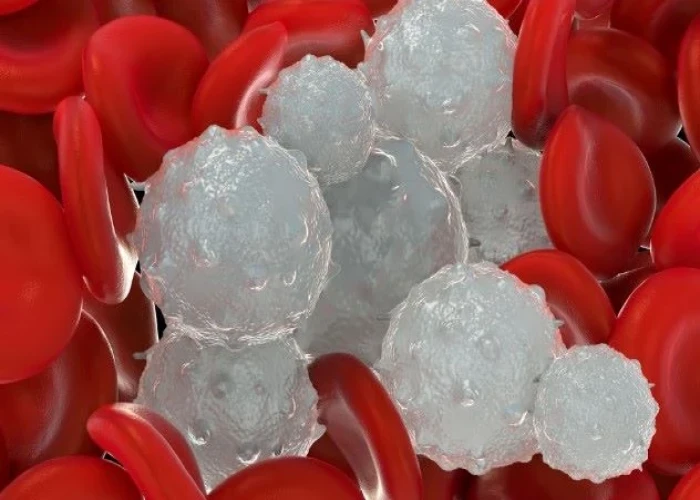 Welcome
Welcome
“May all be happy, may all be healed, may all be at peace and may no one ever suffer."
Milk allergy

Milk allergy is an immune system response to one or more proteins found in cow's milk or other dairy products. The reaction can occur quickly after consuming milk or milk-based products, or it may occur several hours later. Milk allergy is more common in children than in adults, and many children may outgrow the allergy as they get older.
Symptoms of milk allergy can range from mild to severe and may include:
- Skin rash, hives, or eczema
- Swelling of the lips, tongue, or throat
- Wheezing, coughing, or difficulty breathing
- Nausea, vomiting, or diarrhea
- Abdominal cramps or pain
In severe cases, milk allergy can cause anaphylaxis, a life-threatening allergic reaction that requires immediate medical attention.
The diagnosis of milk allergy is usually made by an allergist or healthcare provider, who will take a detailed medical history and may conduct allergy testing, such as skin prick testing or blood tests. Treatment for milk allergy involves avoiding milk and milk-based products, and in severe cases, carrying an epinephrine auto-injector for emergency use. For infants who are allergic to milk, a hypoallergenic formula may be recommended.
It is important to note that milk allergy is different from lactose intolerance, which is a digestive disorder that occurs when the body is unable to break down lactose, a sugar found in milk and other dairy products. Lactose intolerance does not involve an immune system response and is generally not life-threatening, but it can cause uncomfortable digestive symptoms.
Research Papers
Disease Signs and Symptoms
- Hives
- Runny nose
- Diarrhea
- Loose watery stools
- Nausea or vomiting
- Shortness of breath (dyspnea)
- Swollen throat
- Swollen lip
- Mouth itch
- Itching
- Abdomen cramps
Disease Causes
Milk allergy
All true food allergies are caused by an immune system malfunction. If you have milk allergy, your immune system identifies certain milk proteins as harmful, triggering the production of immunoglobulin E (IgE) antibodies to neutralize the protein (allergen). The next time you come in contact with these proteins, IgE antibodies recognize them and signal your immune system to release histamine and other chemicals, causing a range of allergic signs and symptoms.
There are two main proteins in cow's milk that can cause an allergic reaction:
- Casein, found in the solid part (curd) of milk that curdles
- Whey, found in the liquid part of milk that remains after milk curdles
You or your child may be allergic to only one milk protein or to both. These proteins may be hard to avoid because they're also in some processed foods. And most people who react to cow's milk will react to sheep's, goat's and buffalo's milk. Less commonly, people allergic to cow's milk are also allergic to soy milk.
Food protein-induced enterocolitis syndrome (FPIES)
A food allergen can also cause what's sometimes called a delayed food allergy. Although any food can be a trigger, milk is one of the most common. The reaction, commonly vomiting and diarrhea, usually occurs within hours after eating the trigger rather than within minutes.
Unlike some food allergies, FPIES usually resolves over time. As with milk allergy, preventing an FPIES reaction involves avoiding milk and milk products.
Disease Prevents
Milk allergy
There's no sure way to prevent a food allergy, but you can prevent reactions by avoiding the food that causes them. If you know you or your child is allergic to milk, avoid milk and milk products.
Read food labels carefully. Look for casein, a milk derivative, which can be found in some unexpected places, such as in some canned tuna, sausage or nondairy products. Question ingredients when ordering in restaurants.
Sources of milk
Obvious sources of allergy-causing milk proteins are found in dairy products, including:
- Whole milk, low-fat milk, skim milk, buttermilk
- Butter
- Yogurt
- Ice cream, gelato
- Cheese and anything that contains cheese
- Half-and-half
Milk can be harder to identify when it's used as an ingredient in processed foods, including baked goods and processed meats. Hidden sources of milk include:
- Whey
- Casein
- Ingredients spelled with the prefix "lact" — such as lactose and lactate
- Candies, such as chocolate, nougat and caramel
- Protein powders
- Artificial butter flavor
- Artificial cheese flavor
- Hydrolysates
Even if a food is labeled "milk-free" or "nondairy," it may contain allergy-causing milk proteins — so you have to read the label carefully. When in doubt, contact the manufacturer to be sure a product doesn't contain milk ingredients.
When eating out, ask how foods have been prepared. Does your steak have melted butter on it? Was your seafood dipped in milk before cooking?
If you're at risk of a serious allergic reaction, talk with your doctor about carrying and using emergency epinephrine (adrenaline). If you have already had a severe reaction, wear a medical alert bracelet or necklace that lets others know you have a food allergy.
Milk alternatives for infants
In children who are allergic to milk, breast-feeding and the use of hypoallergenic formula can prevent allergic reactions.
- Breast-feeding is the best source of nutrition for your infant. Breast-feeding for as long as possible is recommended, especially if your infant is at high risk of developing milk allergy.
- Hypoallergenic formulas are produced by using enzymes to break down (hydrolyze) milk proteins, such as casein or whey. Further processing can include heat and filtering. Depending on their level of processing, products are classified as either partially or extensively hydrolyzed. Or they may also be called elemental formulas.
- Some hypoallergenic formulas aren't milk based, but instead contain amino acids. Besides extensively hydrolyzed products, amino-acid-based formulas are the least likely to cause an allergic reaction.
- Soy-based formulas are based on soy protein instead of milk. Soy formulas are fortified to be nutritionally complete — but, unfortunately, some children with a milk allergy also develop an allergy to soy.
If you're breast-feeding and your child is allergic to milk, cow's milk proteins passed through your breast milk may cause an allergic reaction. You may need to exclude from your diet all products that contain milk. Talk to your doctor if you know — or suspect — that your child has milk allergy and develops allergy signs and symptoms after breast-feeding.
If you or your child is on a milk-free diet, your doctor or dietitian can help you plan nutritionally balanced meals. You or your child may need to take supplements to replace calcium and nutrients found in milk, such as vitamin D and riboflavin.
Disease Treatments
The only way to prevent an allergic reaction is to avoid milk and milk proteins. This can be difficult because milk is a common ingredient in many foods. Also, some people with milk allergy can tolerate milk in some forms, such as milk that's heated in baked goods, or in some processed foods, such as yogurt. Talk to your doctor about what to avoid.
Despite your best efforts, if you or your child accidentally consumes milk, medications such as antihistamines may reduce a mild allergic reaction.
If you or your child has a serious allergic reaction (anaphylaxis), you may need an emergency injection of epinephrine (adrenaline) and a trip to the emergency room. If you're at risk of having a severe reaction, you or your child may need to carry injectable epinephrine (EpiPen, Adrenaclick, others) at all times. Have your doctor or pharmacist demonstrate how to use this device so that you're prepared for an emergency.
Disease Diagnoses
Disease Allopathic Generics
Disease Ayurvedic Generics
Disease Homeopathic Generics
Disease yoga
Milk allergy and Learn More about Diseases

Priapism

Respiratory syncytial virus (RSV)

Acoustic neuroma

Sleep disorders

Stomach cancer

Schizotypal personality disorder

Pediatric white blood cell disorders

Pectus excavatum
milk allergy, দুধের অ্যালার্জি
To be happy, beautiful, healthy, wealthy, hale and long-lived stay with DM3S.
